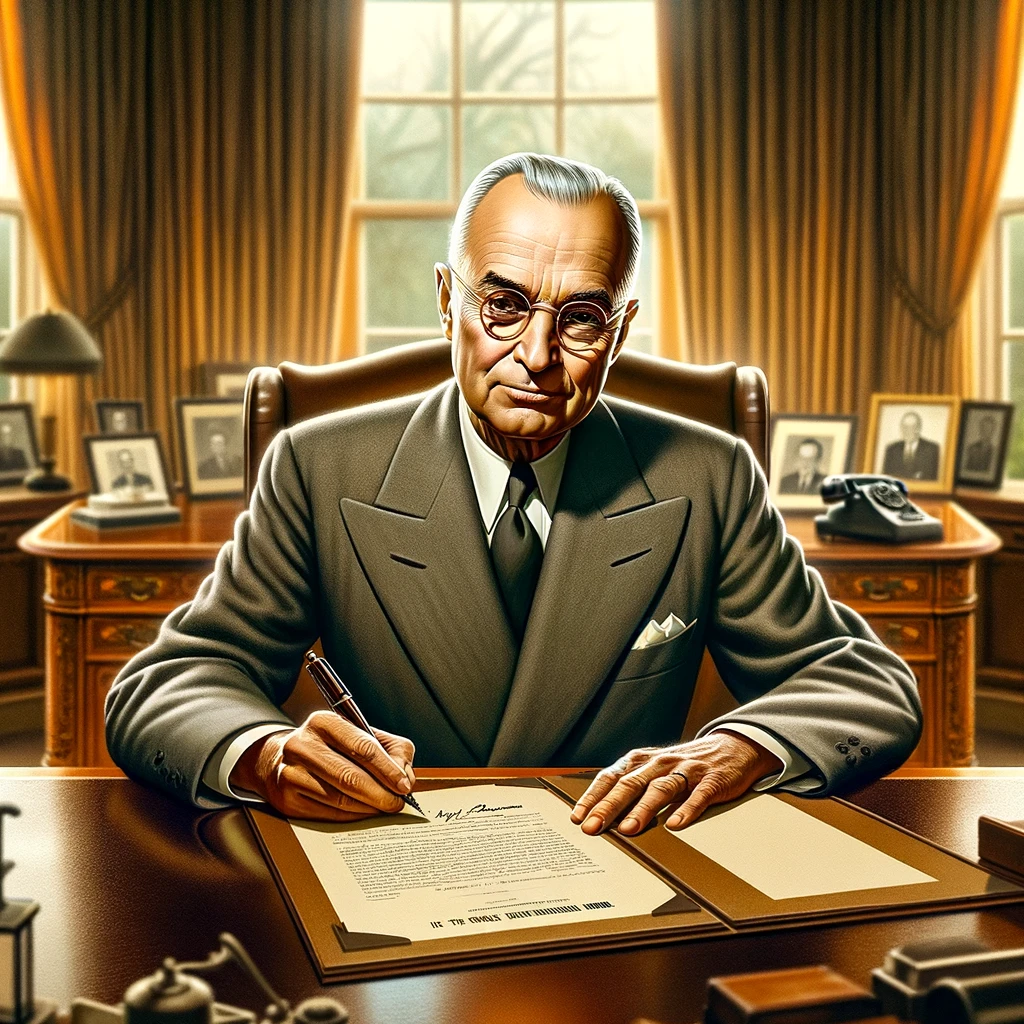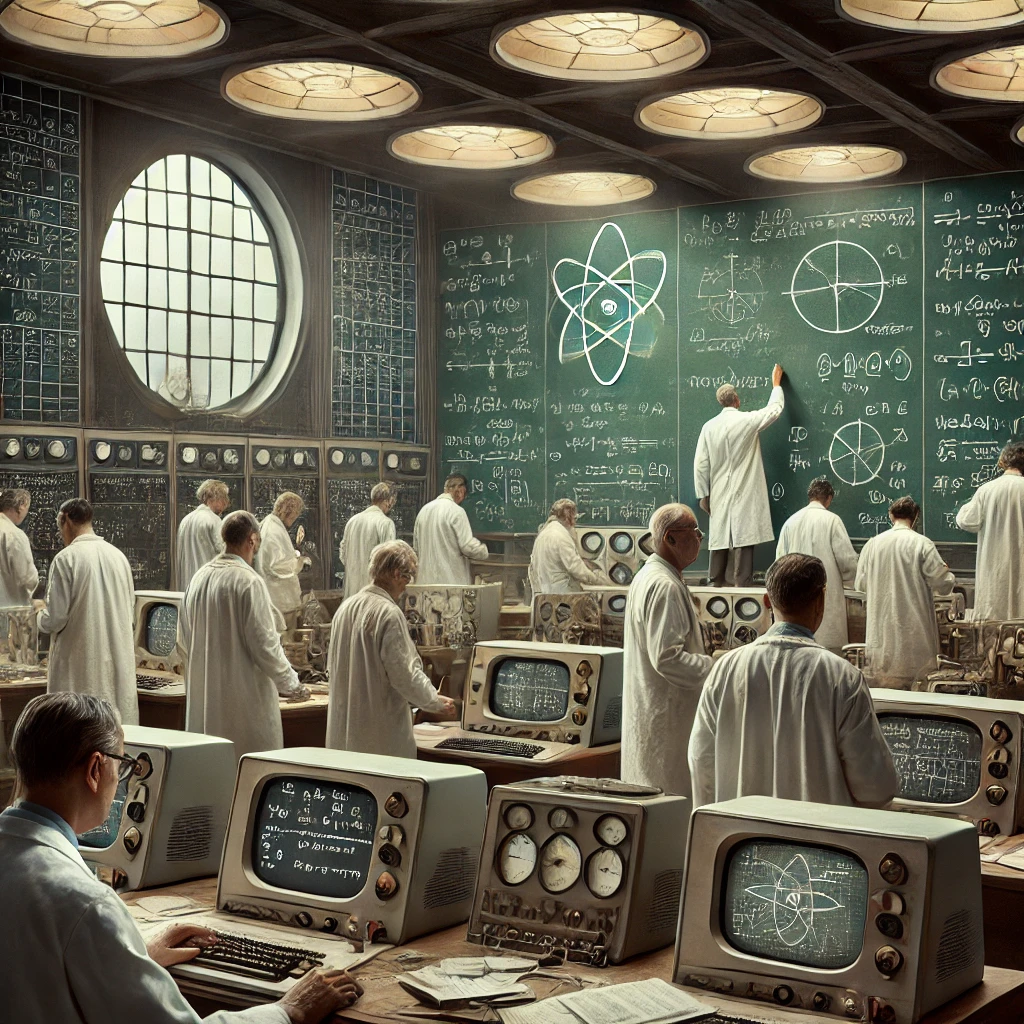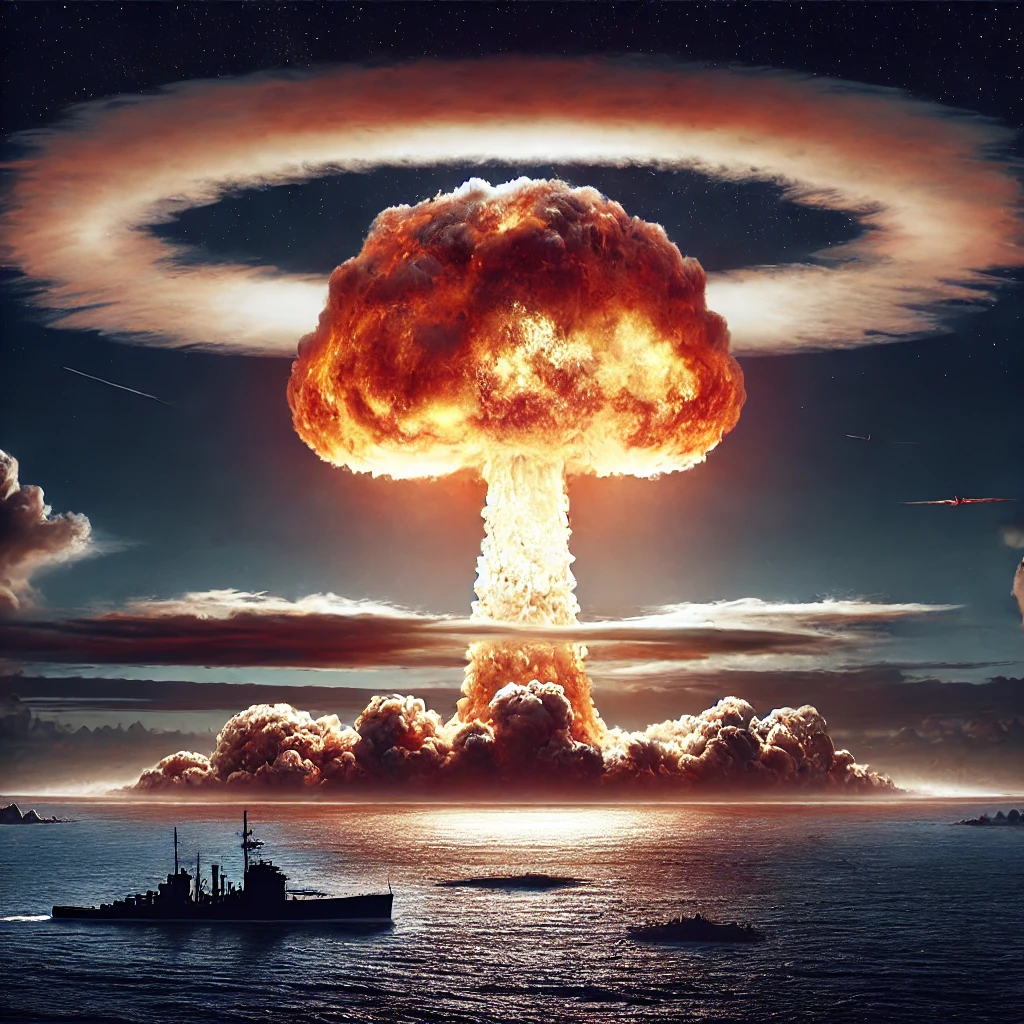On January 31, 1950, President Harry S. Truman announced the decision to proceed with the development of the hydrogen bomb, marking a significant and controversial step in the history of nuclear weapons. This decision came amid escalating Cold War tensions and an intensifying arms race between the United States and the Soviet Union. While the atomic bomb had already demonstrated its destructive power during World War II, the hydrogen bomb promised an even more formidable force, reshaping global military strategies and international relations.

The Context of Truman’s Decision
In the aftermath of World War II, the world entered an era of geopolitical rivalry between the United States and the Soviet Union. The successful detonation of the Soviet Union’s first atomic bomb in 1949 sent shockwaves through the American government, sparking concerns about maintaining military superiority. Scientists like Edward Teller and advocates within the U.S. government pushed for the development of a more powerful thermonuclear weapon. Truman’s decision to approve its development was influenced by the need to counterbalance Soviet advances and prevent any potential strategic disadvantages.
While the decision was framed as a necessity for national security, it was not without controversy. Many scientists, including J. Robert Oppenheimer, opposed the development of the hydrogen bomb, citing ethical concerns and the potential for an uncontrolled nuclear arms race. The prospect of an even deadlier weapon sparked debates about the long-term consequences of escalating nuclear capabilities.
The Impact on the Cold War and Global Politics

Truman’s decision accelerated the arms race between the U.S. and the Soviet Union, leading to an unprecedented expansion of nuclear stockpiles. The first successful test of a hydrogen bomb by the United States, codenamed “Ivy Mike,” occurred on November 1, 1952, demonstrating the immense power of thermonuclear weapons. In response, the Soviet Union developed and tested its own hydrogen bomb in 1953, further intensifying global tensions.
This nuclear competition shaped Cold War diplomacy, fueling an era of deterrence known as Mutually Assured Destruction (MAD). Nations sought to prevent direct conflict through the threat of total annihilation, which paradoxically maintained a fragile peace. However, this period also saw increasing fears of nuclear proliferation, as more nations sought to develop their own nuclear capabilities.
Lasting Effects on Today’s World

The decision to pursue the hydrogen bomb set the stage for modern nuclear policy and international security measures. Treaties such as the Nuclear Non-Proliferation Treaty (NPT) and arms reduction agreements emerged in later decades in response to the dangers posed by these weapons. While the Cold War ended, the legacy of nuclear deterrence continues to shape global relations, with nations maintaining strategic arsenals to this day.
Furthermore, Truman’s decision underscored the ethical and moral dilemmas associated with nuclear advancements. Ongoing debates about disarmament, the risks of nuclear escalation, and the role of nuclear weapons in contemporary defense strategies trace their roots back to this pivotal moment in history. As tensions persist in various regions, the lessons of the past remain relevant in discussions about the future of global security.
Ultimately, Truman’s decision to develop the hydrogen bomb was a defining moment in the history of warfare and diplomacy. It not only transformed the nature of military power but also set a precedent for how nations approach nuclear responsibility, deterrence, and the pursuit of peace in an increasingly complex world.
